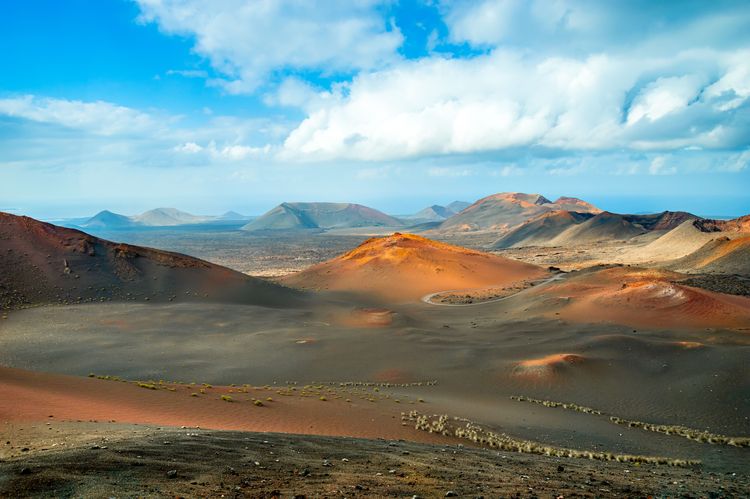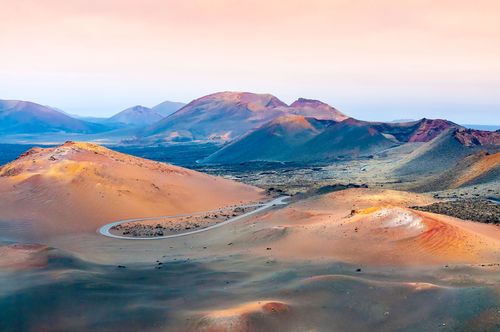César Manrique was born in 1919 in Arrecife, the capital of Lanzarote. Even as a child, he was captivated by the beauty of his native island and soon began to draw inspiration from it in his paintings. In the 1960s, after studying in Spain and exhibiting in various countries, he returned to Lanzarote with the ambition of making it one of the most beautiful places in the world. He succeeded in having buildings of more than two storeys and advertising hoardings banned from the island.
It's impossible to talk about Lanzarote without mentioning its artist and architect of genius, César Manrique, who is responsible for preserving the landscape of the most volcanic of the Canary Islands. Not only has the Canarian artist prevented Lanzarote from being disfigured by mass tourism, like its neighbours Tenerife and Gran Canaria, by imposing, for example, that no building exceed two storeys in height, with the added bonus of the typical white of the island's dwellings. But the local artist really shaped his island, and most of Lanzarote's tourist attractions now bear his mark. This colourful character is renowned for his respect for the environment, notably imposing the absence of advertising hoardings. From the Monumento del Campesino to the Mirador del Rio, from the Jameos del Agua cave to the Cactus Garden, here's an overview of the finest achievements of Lanzarote's genius, César Manrique.
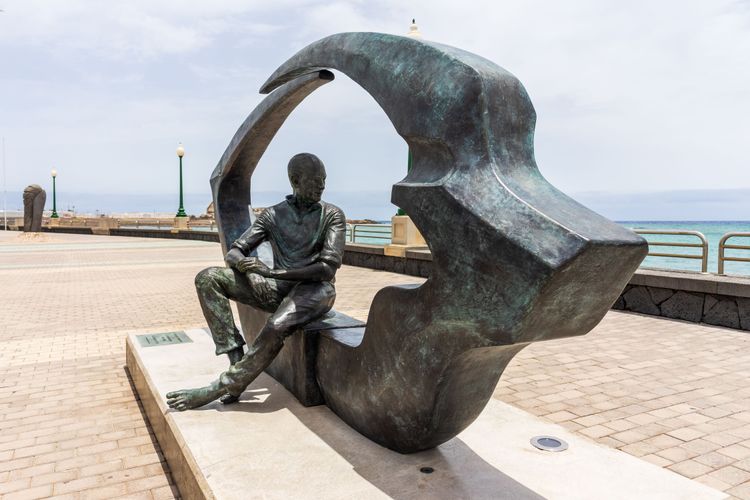
Who is César Manrique?
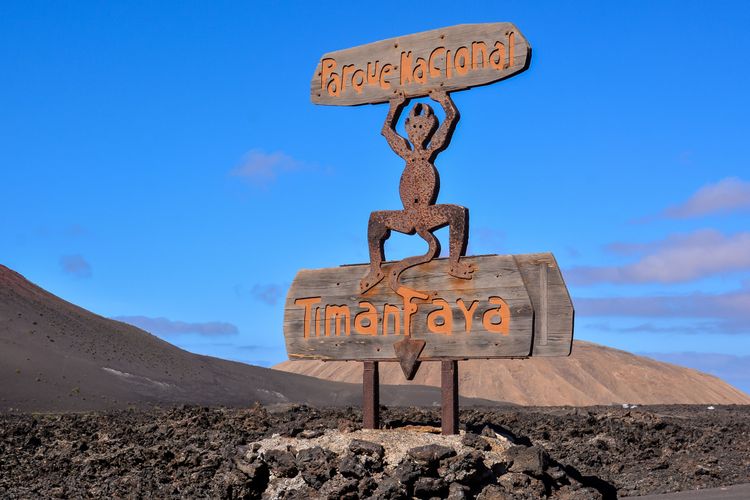
Timanfaya National Park logo, designed by Manrique.
- © underworld / ShutterstockCésar Manrique also let his art express itself in the four corners of Lanzarote, creating astonishing places where nature and culture subtly come together. César Manrique died at the age of 73 in a car accident after a lifelong commitment to preserving the cultural identity and landscapes of his native island.
⭐ Sleep in a hotel designed by César Manrique!
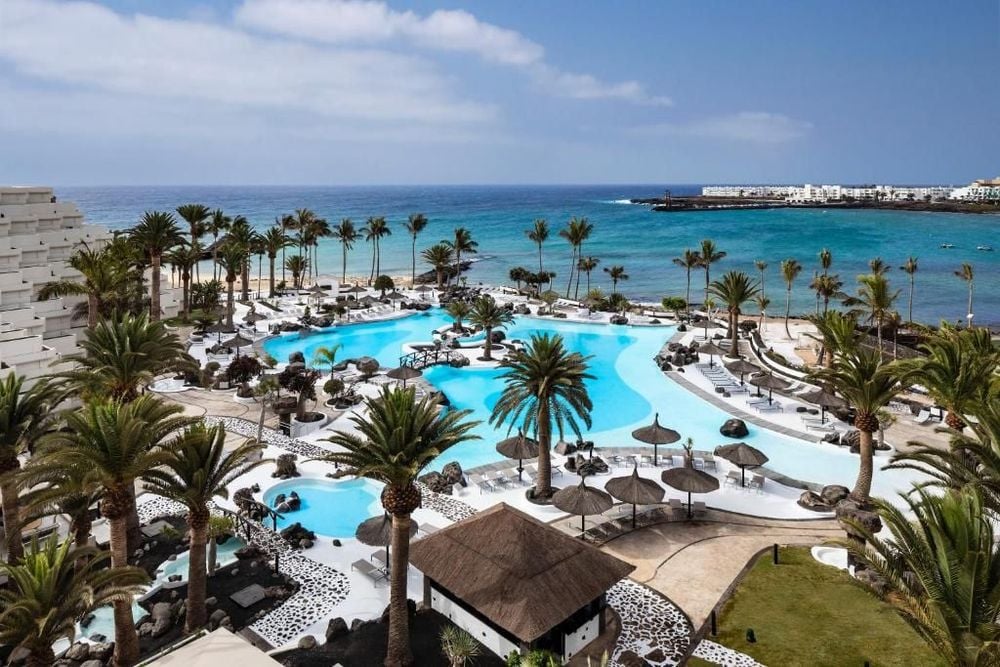 Costa Teguise
Costa Teguise
Paradisus Salinas Lanzarote 5* - Costa Teguise
Designed in collaboration with César Manrique, this 5* beachfront hotel will delight travellers with its swimming pool, restaurant, spa and incredible rooms.The César Manrique Foundation
The artist lived in the municipality of Taro de Tahiche, between Teguise and Arrecife. The artist's former home, built in 1982, was inaugurated as the César Manrique Foundation in March 1992, a few months before his death. The museum covers an area of 30,000 square metres, built on a lava flow caused by volcanic eruptions between 1730 and 1736.

A volcanic bubble from the César Manrique Foundation.
- © Jef Wodniack / ShutterstockHere you can admire his works, as well as his collection of contemporary art, with paintings by Picasso, Miro and Tapies. The rooms are nestled in five volcanic bubbles linked by small corridors cut into the basalt of the lava flow: it's like being in a science fiction film! In the outdoor space, we find the familiar world of the artist and his swimming pool, surrounded by abundant vegetation.
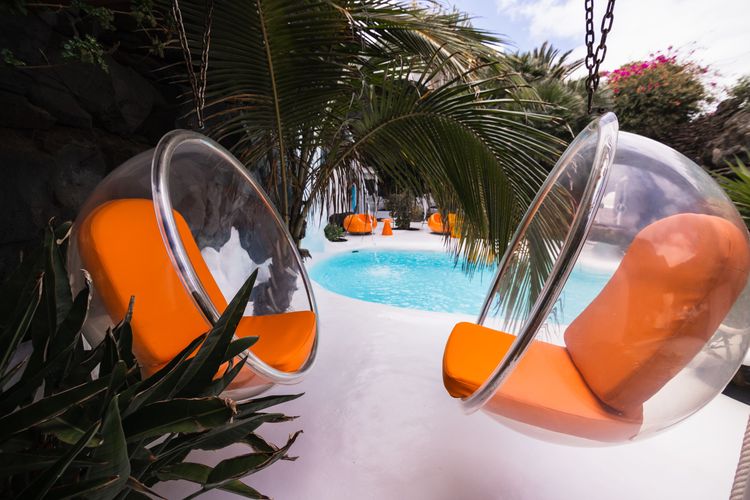
The swimming pool at the César Manrique Foundation.
- © natakontur / ShutterstockPractical information for the César Manrique Foundation
⏰ Opening times
The César Manrique Foundation is open every day from 10am to 6pm, except 1 January. Tickets can be purchased on site.
👛 Prices
- Full price: £8.50
- Under 13s: £2.50
- Under 7s: free
- Combined ticket César Manrique Foundation + House-Museum: £15
The Cactus Garden
Located in the north of Lanzarote, among the Guatiza cactus plantations for growing cochineal, the Jardín de Cactus, built in 1990, was César Manrique's last work. The artist transformed a former volcanic ash quarry into a theatre-forum to showcase a cactus plantation.

The Jardín de Cactus in Lanzarote.
- © Olena Tur / ShutterstockMore than 10,000 cacti representing 1,450 different species from America, Madagascar and the Canary Islands are displayed in multi-level terraces. All these cacti were brought together by botanical expert Estanislao Gonzalez Ferrer. The exhibition is completed by a restored old mill, whitewashed to show how the Canary Islands millet flour used to make gofio is made.
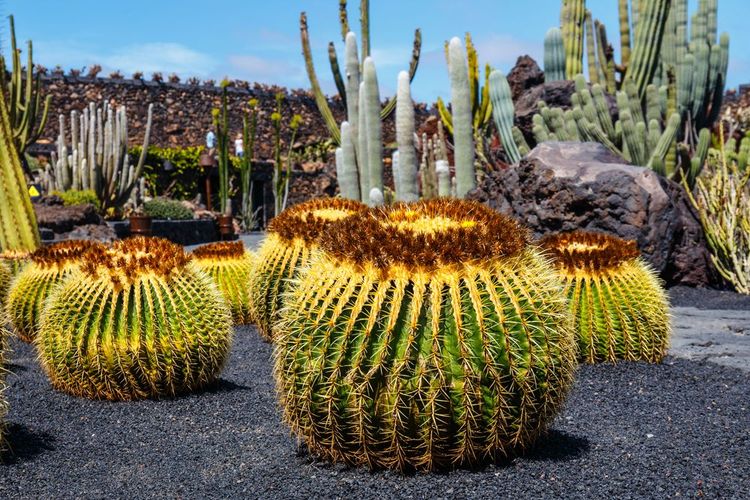
Cacti in the Jardín de Cactus.
- © Dziewul / ShutterstockPractical information for the Jardín de Cactus
⏰ Opening times
The Jardín de Cactus is open every day from 10am to 5pm.
👛 Prices
- Full price: £5.60
- Under-13s: £2.80
- Under 7s: free
- CACT tourist pass: free
Jameos del Agua
The Jameos del Agua were created by César Manrique and Jesus Soto in 1968, and were the first tourist centre to result from César Manrique's work on Lanzarote. Seawater seepage here has led to the formation of a natural lake and the development of a species of tiny white albino crabs unique in the world, the "jameitos", whose scientific name is Munidopsis Polymorpha.
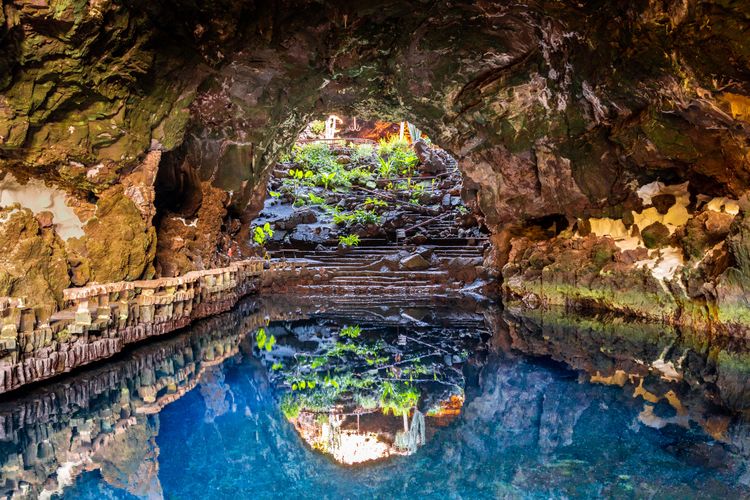
The Jameos del Agua natural lake.
- © Balate Dorin / ShutterstockWhen the sun shines, its rays pass through the openings in the ceiling of the grotto to reflect off the lake, creating a magnificent effect. Don't throw coins! This isn't the Trevi Fountain and the crabs are endangered... Manrique has added two concert halls, a bar-restaurant, two dance floors and a surprising seawater pool (for decoration only, swimming is prohibited).
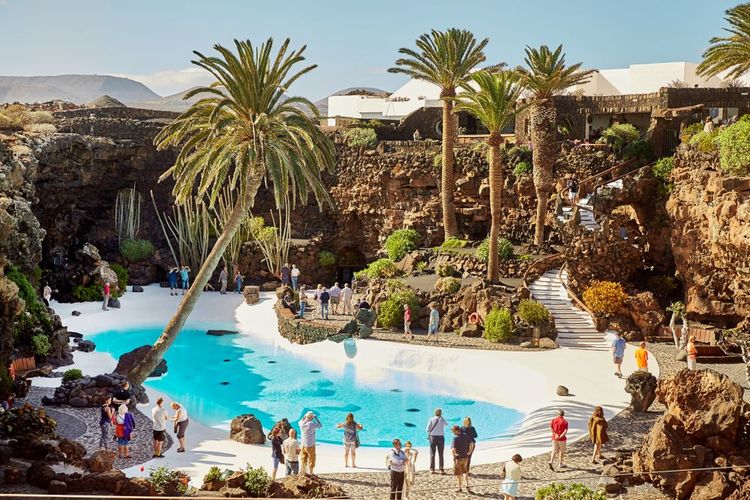
The swimming pool of Jameos del Agua.
- © MaraZe / ShutterstockPractical information for Jameos del Agua
⏰ Opening times
The Jameos del Agua are open every day from 10am to 6pm.
👛 Prices
- Full price: £8.60
- Under 13s: £4.30
- Under 7s: free
- CACT tourist pass: free
The Mirador del Río
Perfectly integrated into the landscape at the top of the Risco de Famara, the Mirador del Río is a former military artillery position. At first glance, it doesn't look like much, but once you reach the panoramic terrace at an altitude of 480 metres, the view of the island of La Graciosa is impressive!
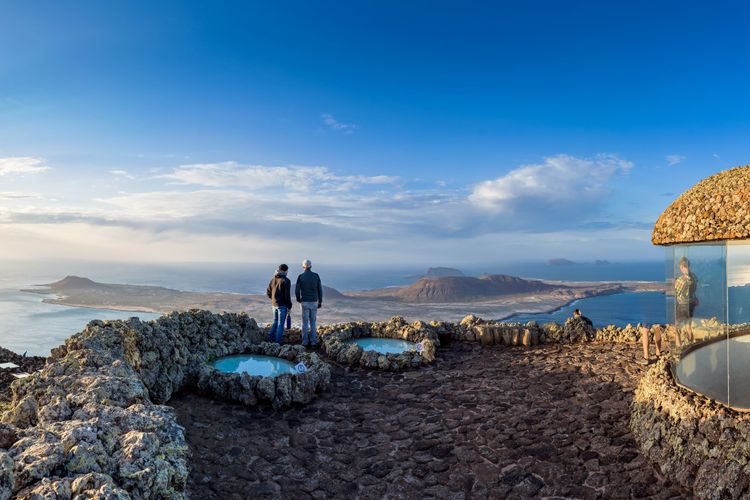
The view of the island of La Graciosa from the Mirador del Río.
- © Eddy Galeotti / ShutterstockOn a clear day, you can even see the rest of the islets that make up the Chinijo archipelago. This view can also be admired from the café-restaurant through its large picture windows. The structure was carved out of the volcanic rock in 1973, with only the exterior balcony, which serves as a viewpoint, standing out. It's a real piece of work by César Manrique, who has once again taken a natural site and turned it into a unique place!
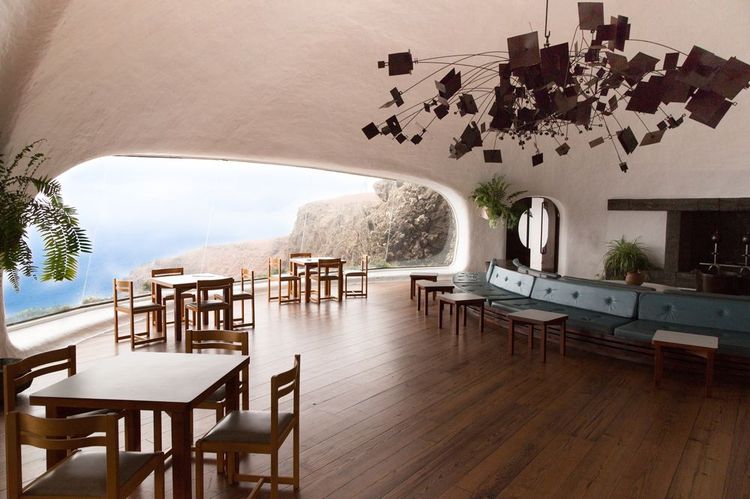
The Mirador del Río panoramic restaurant
- © Marc Lechanteur / ShutterstockPractical information for the Mirador del Río
⏰ Opening times
The Mirador del Río is open every day from 10am to 5pm.
👛 Prices
- Full price: £4.30
- Under-13s: £2.15
- Under 7s: free
- CACT tourist pass: free
The César Manrique House Museum
From 1988 until his death, the artist lived in what is now the César Manrique House-Museum in Haría, in the north of Lanzarote. It's easy to see why César Manrique moved here at the end of his life: this quiet, unspoilt village, one of the most beautiful on the island, is perched in a green setting surrounded by volcanoes, far from the hustle and bustle of the coast. In short, it's a peaceful, restful place where you can paint!
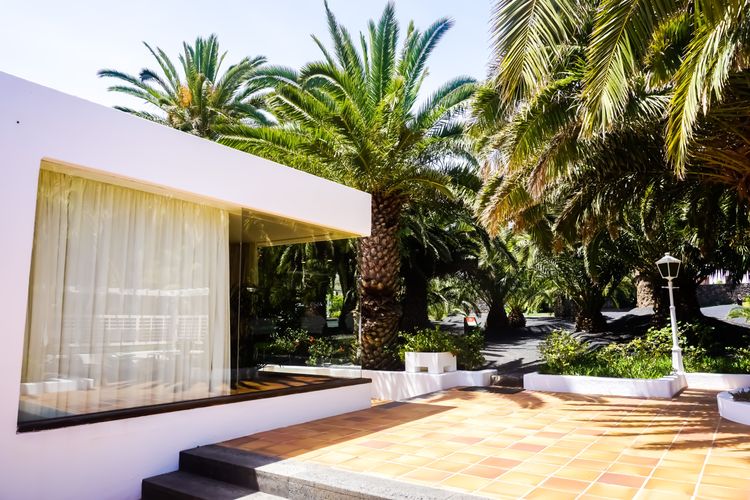
La Maison-musée César Manrique à Lanzarote.
- © Stefano_G / ShutterstockHe transformed a ruined farmhouse in a palm-fringed agricultural estate into a superb residence that can be visited today. You can put yourself in the shoes of his guests and immediately understand that this oasis of tranquillity was perfect for entertaining. You can see his studio, the annex where he entertained friends, his swimming pool and his garden.
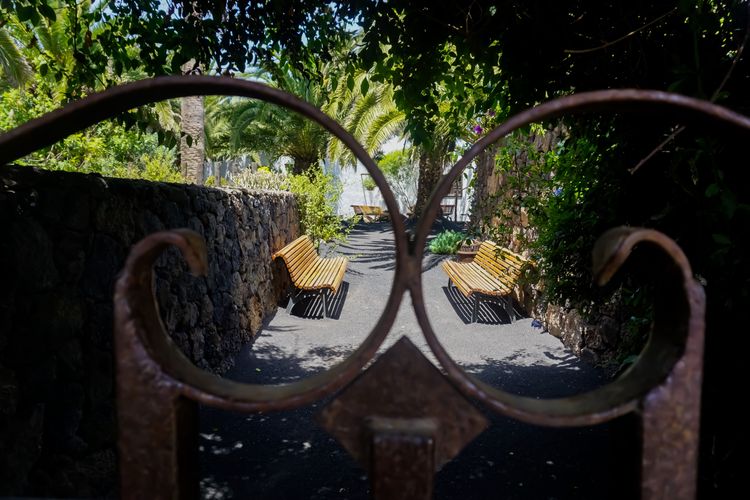
The garden of the César Manrique House Museum.
- © Stefano_G / ShutterstockPractical information for the César Manrique House Museum
⏰ Opening times
The César Manrique House Museum is open daily from 10.30 am to 6 pm, except on 1 January. Tickets can be purchased on site.
👛 Prices
- Full price: £8.60
- Under 13s: £2.50
- Under 7s: free
- Combined ticket César Manrique Foundation + House-Museum: £14.50
La Casa Museo del Campesino
The Casa Museo del Campesino is a tribute to the hard work of the people of Lanzarote. On this arid land covered in dark volcanic ash stands the Monument to Fertility, created in 1968 fromold sailing ship water containers and various painted objects assembled by César Manrique.

Le Monumento del Campesino.
- © Pawel Kazmierczak / ShutterstockRight next door, the House-Museum of the Farmer is a group of buildings arranged around an open square, in the purest Lanzarote tradition. Immaculate whitewashed walls, green shutters and palm trees: this is a setting of great sobriety and rare beauty. The complex houses the interior of a traditional Lanzarote house and showcases the island's typical trades, such as shoemaking, weaving, pottery, wine-growing and wine-pressing.
Practical information for the Monumento del Campesino
⏰ Opening times
Casa Museo del Campesino is open every day from 10.30am to 6pm.
👛 Admission
The good news is that admission is completely free!
